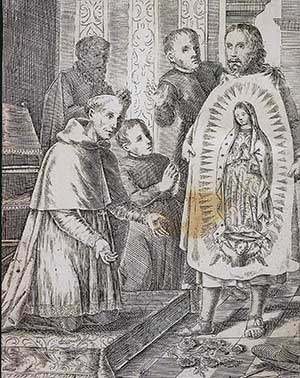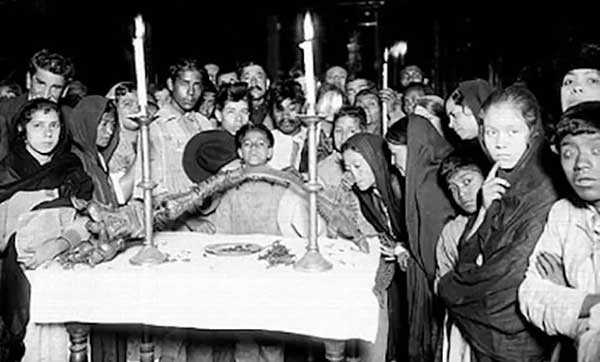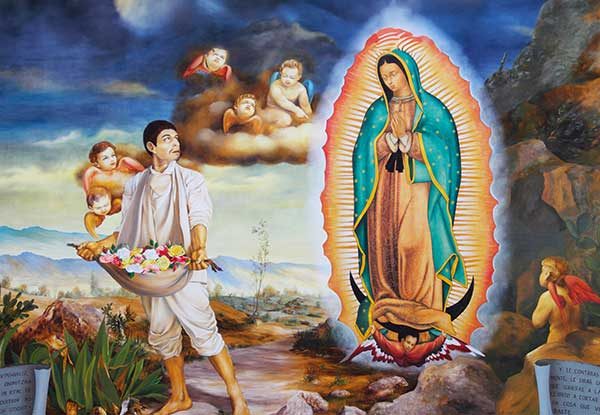
TOPICS:
The Fragile Tilma and the Fragile Soul
Nov 05, 2025 / Written by: Tonia Long
A Testament to God’s Goodness
For nearly five centuries, the miraculous image of Our Lady of Guadalupe has stood as one of the greatest wonders in human history, not only because of its supernatural endurance but also because of the deeper truth it reveals about the human heart. The image of the Blessed Virgin, mysteriously impressed upon the delicate fabric of an agave cloak, is more than a relic of the past; it functions as a living metaphor for the fragile soul that, when touched by God, becomes incorruptible.
The Humble Cloth

In 1531, the Mother of God appeared to Juan Diego, a poor Aztec convert, on the slopes of Tepeyac Hill. When the bishop asked for a sign, the Virgin directed the humble messenger to gather roses — miraculously blooming in the winter soil — and carry them in his cloak, or tilma. As the flowers fell before the bishop, an image of the Virgin Mary appeared, imprinted on the coarse agave fabric.
It was a worthless garment, woven from the coarse fibers of the maguey plant, designed to last no more than twenty years. Nonetheless, this fragile material — so easily torn, frayed, or destroyed by time — has preserved the holy image for nearly five hundred years.
The tilma, fragile and perishable by nature, became the vessel of a divine miracle. And so it is with the human soul.
We, too, are fragile—worn by sin, time and sorrow. Our hearts, like agave fibers, are easily damaged by the harsh winds of pride, fear, and despair. Yet when we surrender that fragile fabric of our being to God’s will, He transforms it into something enduring, radiant, and filled with purpose.
The Test of Time
In 1787, the Mexican scientist Dr. José Ignacio Bartolache aimed to test the durability of the tilma’s material. Using the same agave fiber, he crafted two replicas of the sacred image and placed them in Tepeyac’s shrines. Within ten years, both copies had completely disintegrated. The original, however, remains in pristine condition 500 years later.
The experiment confirmed what the faithful already knew: the preservation of the tilma is a miracle.
Just as no human skill can prevent that fragile cloth from decaying, no human strength can preserve the soul without divine grace. The tilma endures because it bears the image of Our Lady, and the soul lasts when it bears the image of Our Lord.
When grace imprints itself upon the heart, it sanctifies weakness and makes it a testimony of divine power. As Saint Paul wrote, “My strength is made perfect in weakness.” (2 Corinthians 12:9)
Painted with Light

Modern scientists have continued studying the tilma. Dr. Richard Kuhn, a Nobel Prize–winning chemist, concluded that the pigments used to create the image could not be identified as having any natural, mineral, or synthetic origin. Microscopic analysis shows no brushstrokes, no preparation layer, and no signs of human artistry.
The colors seem to hover above the fabric, as if painted with light.
Similarly, the beauty of holiness cannot be traced to any earthly source. Virtue does not arise from our efforts alone; it results from the combined work of the Holy Spirit, received through the sacraments of Holy Mother Church, and a baptized soul in a state of grace.
The Bomb That Could Not Destroy

Even violence has not tarnished the sacred tilma. On November 14, 1921, a man named Luciano Pérez Carpio entered the Basilica of Our Lady of Guadalupe, concealing a powerful bomb in a bouquet of flowers. His goal was to destroy both the image and the faith it inspired.
The explosion was catastrophic. Windows shattered throughout the church and surrounding buildings. The marble altar was wrecked. A large bronze cross near the tilma was twisted from the blast.
And yet, when the smoke cleared, the tilma was untouched. The image of Our Lady remained serene. Not even the glass covering it was cracked.
It was as if Heaven had drawn a shield around her image—and by extension, around the faith of the millions who love her.
How many souls, as fragile and corruptible as that agave cloth, have been saved from damnation through her intercession? How many have endured the blasts of temptation, despair and suffering because she has stood between them and ruin?

The Soul That Endures
The tilma of Juan Diego is more than just a relic; it is a symbol. It shows that God likes to use what’s weak to surprise the strong. He chooses what’s simple to reveal something extraordinary. The agave fiber, rough, temporary, and unpolished, became the canvas for Heaven’s most important message to the New World.
And similarly, the fragile human soul, bruised by failure, worn from struggle, and feeling unworthy in every visible way, can become a dwelling of grace through the sacraments.
No scientific instrument can explain why the tilma has not decayed. Likewise, no logic can explain why faith endures in a world determined to destroy it. Yet, as the bomb in 1921 proved, the image of the Virgin remains unharmed — just as the soul under her protection stays safe.
Our Lady’s words to Juan Diego still echo today:
“Am I not here, I who am your Mother? Are you not under my protection?”
The fragile tilma persists, not due to its own strength, but because of the one whose image is divinely imprinted on it.
So too the fragile soul devoted to the Immaculate Heart of Mary is capable of enduring hardships with her grace.




